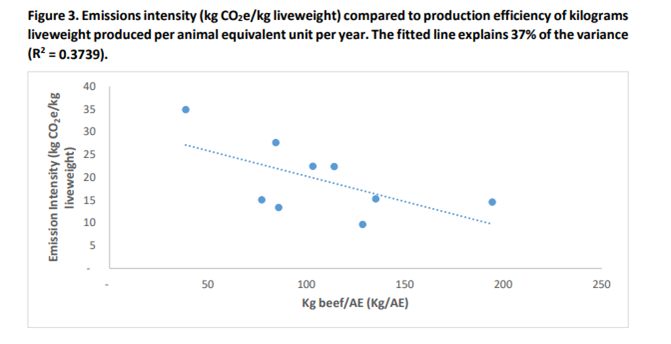From method to market – unlocking ecosystem service opportunities for livestock producers
Livestock properties occupy almost 50% of the Australian continent. The From Method to Market project explored the opportunities and barriers to Queensland graziers in accessing payments for environmental services while still profitably producing livestock.
Methods such as the use of legumes in extensive grazing systems and animal supplementation for reduced enteric methane emissions, biodiversity enhancement, and a whole-of-farm method design were examined for maximising the generation and gross margin of carbon credits and co-benefits.
The method to market project aimed to:
- Identify and overcome, technical and economic barriers to producers participating in ecosystem service markets whilst producing livestock.
- Review existing and develop new scientific methods for livestock producers to be rewarded for providing ecosystem services (generating carbon credits, biodiversity, water quality credits) whilst producing livestock
- Provide livestock producers access to knowledge, skills and the opportunity to improve productivity through existing markets, new markets and emerging markets.
The final report is available to download from P.PSH.1246 – From method to market – unlocking ecosystem service opportunities for livestock producers | Meat & Livestock Australia
Results/key findings:
- Queensland case study farms that exhibited higher herd productivity is associated with lower emissions intensity per kilo of liveweight produced than their industry peers (Figure 3, below).
- Key drivers of production are associated with emissions intensity reduction, demonstrating options for performance-centric reduction of emissions (Figure 44, below).
- Project pre-conceptions were that poor landholder participation in ecosystem services markets could be solved by ‘fixing and developing methods and aiding technical solutions that bring down the cost of participation’, however, stakeholder survey results revealed ecosystem services markets revealed strong negative sentiment and concern around a broad range of complex issues relating to project design and implementation requiring broad systemic change if widespread uptake in grazing systems is to be achieved.
- In the Queensland case studies, carbon emissions reduction pathways did not currently have the capacity to completely neutralise production emissions indefinitely but only for a period of time.
- The emission abatement options that are currently available are varied in their suitability for different production systems and can be antagonistic to production. They are also limited in their potential abatement on farm under current feasible methodologies. Given the difficulty of reducing emissions to zero and/or offsetting emissions on farm, a thorough analysis of productivity, business goals and sustainability goals is required.
- Often there are large proportions of vegetated areas on properties that are ineligible for carbon projects and ACCU generation, though they represent environmental stewardship by producers that should be recognised.
- At the individual business scale the focus should be on identifying and implementing opportunities to reduce the climate impact of the business and ensure long term business sustainability.
Within the project, a number of publications were developed exploring the potential for biodiversity, soil carbon sequestration and novel ACCU scheme methods, to benefit Queensland graziers. These are presented as attachments in the final report.
When:
2020 to 2024
Contact:
Dr Hayley McMillan, email: hayley.mcmillan@dpi.qld.gov.au
Kerry Goodwin, email: kerry.goodwin@dpi.qld.gov.au
Dr Steven Bray, email: steven.bray@dpi.qld.gov.au
Dr Lester Pahl, email: lester.pahl@dpi.qld.gov.au
Project partners:
The ‘From Method to Market’ project was jointly funded by Queensland Department of Agriculture and Fisheries, The Land Restoration Fund, CIBO Labs and Meat & Livestock Australia.
‘From method to market’ news articles
Cementing the foundations for livestock producers to become carbon neutral →
Can good grazing management sustain biodiversity in the Brigalow belt? →
To apply to be a part of the Carbon Neutral Grazier Network click here
Other resources: Carbon and greenhouse issues in the beef industry:
- Climate Clever Beef project summary
- Scientific journal papers and reports (regrowth and vegetation carbon, livestock methane, soil carbon, savanna burning, net carbon position, business analysis and grazing land management).
- Case studies
- Fact sheets
- YouTube videos
- Field day handouts
- Newsletter articles
- Conference proceedings
- Final reports

